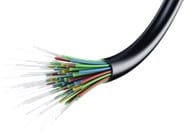The following terms are helpful for every PBX system owner to know. Understanding the basics of your technology help you get the most from your system and plan for future changes.
Jitter – Jitter is defined as a variation in the delay of received packets. The sending side transmits packets in a continuous stream and spaces them evenly apart. Because of network congestion, improper queuing, or configuration errors, the delay between packets can vary instead of remaining constant. What you hear is a stuttered, garbled voice or tiny quality to your call.
Switch – A switch is a device that keeps a record of the MAC addresses of all devices connected to it and then channels incoming data from any of multiple input ports to the specific output port that will take the data toward its intended destination.
VoIP – (Voice over Internet Protocol) The transmission of voice over the Internet as digital packets rather than the traditional circuit-committed protocols of the old public switched telephone service. VoIP uses real-time protocol (RTP) to help ensure that the packets get delivered in a timely way.
Bandwidth – Bandwidth is the volume of data that can be transmitted over a communication line in a fixed amount of time; expressed in bits per second (bps) or bytes per second for digital devices and in cycles per second, or Hertz (Hz) for analog devices. A suitable amount of bandwidth helps ensure that your office is able to properly support your voice data needs.
Latency – The measure of how fast your phone connects to the PBX server. This rate measures the fractions of a second it takes for your phone to tell the PBX server that it is on and ready to go. The goal is to always have the lowest latency possible to help ensure call quality stays at optimum levels.